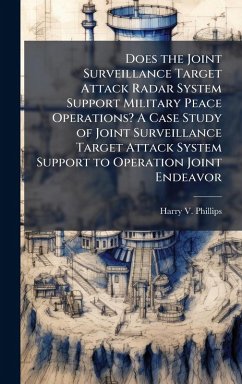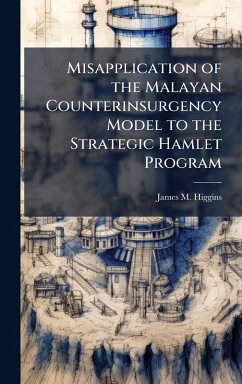
Struggling to Target
Versandkostenfrei!
Versandfertig in über 4 Wochen
25,99 €
inkl. MwSt.
Weitere Ausgaben:

PAYBACK Punkte
13 °P sammeln!
This paper examines the evolution of targeting and asks how effectively has the U.S. Air Force incorporated targeting into its theory, doctrine and infrastructure underpinning practice. To answer this question, I begin by defining targeting. The objective is to emphasize targeting's pivotal role in the application of aerospace power. The paper focuses on fixed targeting. Mobile targeting is important, yet focuses primarily on fielded forces rather than the classical centers of gravity (COG): leadership, organic essentials, infrastructure and population, which are influenced through strategic a...
This paper examines the evolution of targeting and asks how effectively has the U.S. Air Force incorporated targeting into its theory, doctrine and infrastructure underpinning practice. To answer this question, I begin by defining targeting. The objective is to emphasize targeting's pivotal role in the application of aerospace power. The paper focuses on fixed targeting. Mobile targeting is important, yet focuses primarily on fielded forces rather than the classical centers of gravity (COG): leadership, organic essentials, infrastructure and population, which are influenced through strategic attack, counter-information, and space, airpower functions that depend on fixed targeting. Following a brief look at theory, the paper examines historical targeting practices from WW I to Operation Allied Force to determine how effectively the Air Force incorporated targeting into practice. The paper then assesses how effectively the U.S. Air Force has incorporated the targeting discipline into its current doctrine and infrastructure. The last chapter examines the potential implications in order to answer the "so what" associated with the paper's findings. The conclusion reached is Air Force targeting suffers from a lack of vision, doctrine and the requisite infrastructure underpinning practice that represents a source of operational risk to the effective employment of airpower. This work has been selected by scholars as being culturally important, and is part of the knowledge base of civilization as we know it. This work was reproduced from the original artifact, and remains as true to the original work as possible. Therefore, you will see the original copyright references, library stamps (as most of these works have been housed in our most important libraries around the world), and other notations in the work. This work is in the public domain in the United States of America, and possibly other nations. Within the United States, you may freely copy and distribute this work, as no entity (individual or corporate) has a copyright on the body of the work. As a reproduction of a historical artifact, this work may contain missing or blurred pages, poor pictures, errant marks, etc. Scholars believe, and we concur, that this work is important enough to be preserved, reproduced, and made generally available to the public. We appreciate your support of the preservation process, and thank you for being an important part of keeping this knowledge alive and relevant.












